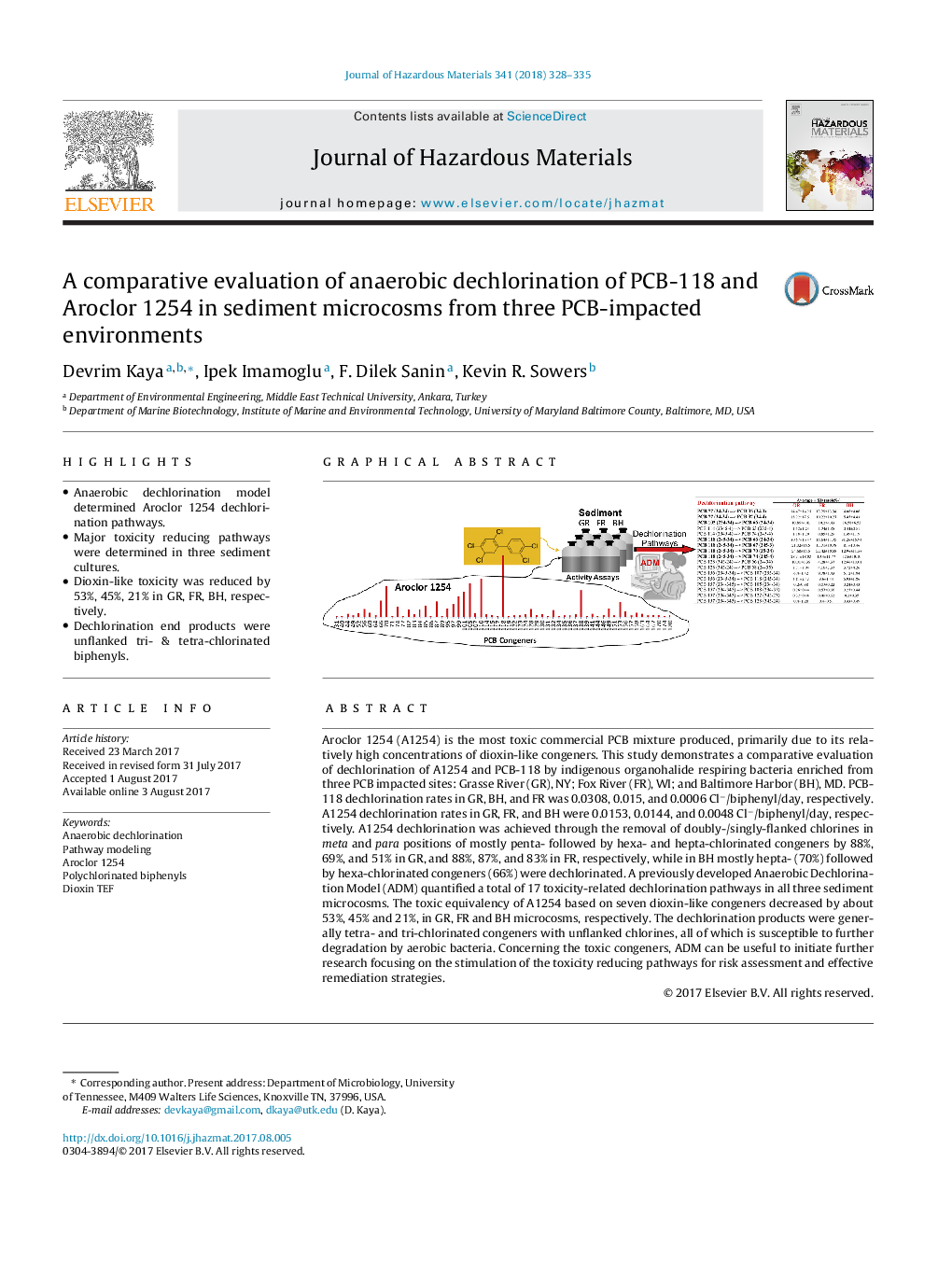| کد مقاله | کد نشریه | سال انتشار | مقاله انگلیسی | نسخه تمام متن |
|---|---|---|---|---|
| 4979277 | 1453022 | 2018 | 8 صفحه PDF | دانلود رایگان |

- Anaerobic dechlorination model determined Aroclor 1254 dechlorination pathways.
- Major toxicity reducing pathways were determined in three sediment cultures.
- Dioxin-like toxicity was reduced by 53%, 45%, 21% in GR, FR, BH, respectively.
- Dechlorination end products were unflanked tri- & tetra-chlorinated biphenyls.
Aroclor 1254 (A1254) is the most toxic commercial PCB mixture produced, primarily due to its relatively high concentrations of dioxin-like congeners. This study demonstrates a comparative evaluation of dechlorination of A1254 and PCB-118 by indigenous organohalide respiring bacteria enriched from three PCB impacted sites: Grasse River (GR), NY; Fox River (FR), WI; and Baltimore Harbor (BH), MD. PCB-118 dechlorination rates in GR, BH, and FR was 0.0308, 0.015, and 0.0006 Clâ/biphenyl/day, respectively. A1254 dechlorination rates in GR, FR, and BH were 0.0153, 0.0144, and 0.0048 Clâ/biphenyl/day, respectively. A1254 dechlorination was achieved through the removal of doubly-/singly-flanked chlorines in meta and para positions of mostly penta- followed by hexa- and hepta-chlorinated congeners by 88%, 69%, and 51% in GR, and 88%, 87%, and 83% in FR, respectively, while in BH mostly hepta- (70%) followed by hexa-chlorinated congeners (66%) were dechlorinated. A previously developed Anaerobic Dechlorination Model (ADM) quantified a total of 17 toxicity-related dechlorination pathways in all three sediment microcosms. The toxic equivalency of A1254 based on seven dioxin-like congeners decreased by about 53%, 45% and 21%, in GR, FR and BH microcosms, respectively. The dechlorination products were generally tetra- and tri-chlorinated congeners with unflanked chlorines, all of which is susceptible to further degradation by aerobic bacteria. Concerning the toxic congeners, ADM can be useful to initiate further research focusing on the stimulation of the toxicity reducing pathways for risk assessment and effective remediation strategies.
267
Journal: Journal of Hazardous Materials - Volume 341, 5 January 2018, Pages 328-335